At Displayplan we committed to making effective sustainability changes to help us reach our goal of net zero by 2040.
As part of this commitment, we have utilised data, transparency and our carbon disclosure report to ensure we are accountable for driving effective differences and working towards a sustainable future.

Want to know more? Fill out the form to download the detailed report.
Download the Detailed Carbon Report

This month we follow our Creative Director Dudley and the team on their visit to EuroShop 2023.
Some of you may have already seen these highlights, but if you haven’t – Click here to see how a new take on existing technologies can engage, excite, and activate the imagination of shoppers.
This year the themes of discovery, play, intrigue, and user creation really energised our team. Meanwhile, the theme of sustainability remaining high up on the agenda ensured they were left reassured that important issues weren’t being ignored.
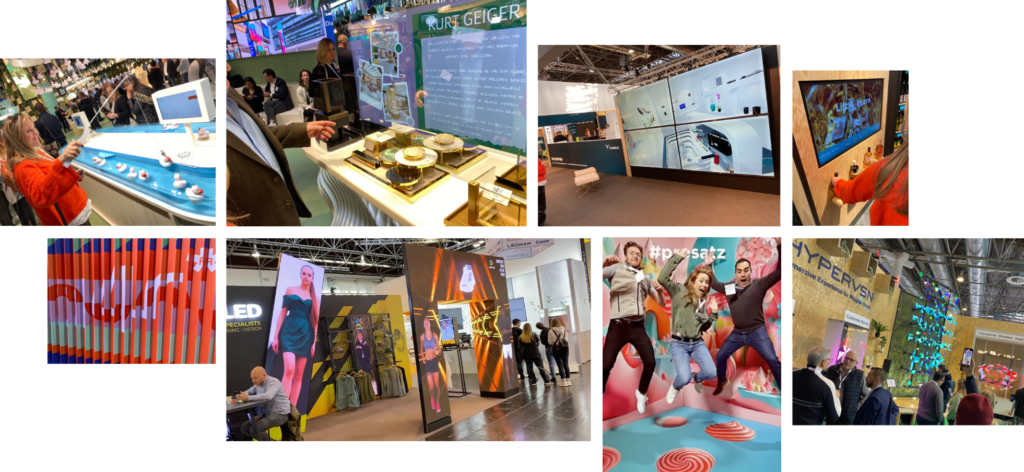
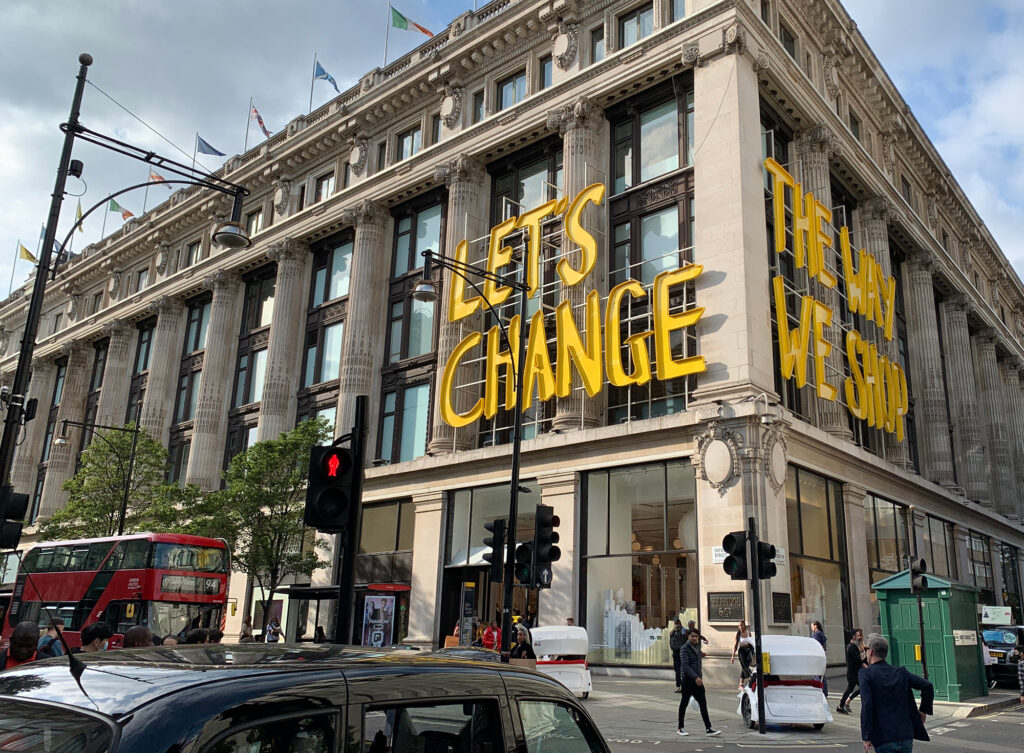
There is no doubt that consumer behaviour has had a shift in the last 5 years. This shift has seen consumers making informed choices about products based on green credentials and dropping brands that aren’t legitimate in this space, whilst embracing and explicitly promoting those that are.
Perhaps spurred on by the obvious changing patterns to our weather, or the swaths of plastic floating in the pacific, or pollution crisis after pollution crisis, whatever it may be – 70% of individuals across 30 countries believe they will be failing future generations if they don’t look to fight climate change through better product choices and recycling [1]. That said, they don’t believe the onus is on them alone – 51% of people think the primary responsibility for more ethical and sustainable consumerism lies with businesses [2].
Sustainability measures consumers expect from retailers include: Recycling, used & refurbished clothing sections, alternative packaging, refill options, the elimination of single use plastics, the ability to hire, or food waste solutions, to name but a few.

This ‘green awakening’ is set to continue, and since it can be so ultimately beneficial for all involved to be more sustainable, then brands and organisations of all kinds should get onboard and push the agenda.
Below are just a few of the key questions we asked Lynda our Strategic Development Director and Dudley our Creative Director in a recent interview about Displayplans’ Global Sustainability drive:
How much demand are Displayplan getting from clients for sustainable solutions?
Lynda: Global brand clients are asking to understand the carbon footprint and environmental impact of displays. Additionally, they want to understand the total impact of their operations, therefore they’re asking us to account for the carbon footprint of our operations as well.
For many of our UK retailer clients, sustainability conversations about equipment and retail fit out solutions does not get as much attention as their priority, the products themselves. Though there is a lot of curiosity and open mindedness, and each month we are having more and more sustainability conversations. Which is encouraging, it’s what we want.
Dudley: The competitive edge that can be achieved making sustainability an overt focus can’t be ignored, what’s great is that much of what we deliver is sustainable. There is still a real balance to be found between desire and costs; while clients come to us with a desire to be more sustainable, they also have procurement departments looking to reduce costs which we cater to through value engineering. We work to continually improve and refine and support our clients.
How do Displayplan cater to that demand?
Lynda: Our concept and tech design teams always keep a few core principles in mind:
- Use recyclable materials only, for example – no PVC
- Design for disassembly, no bonded materials, everything must come apart at the end of life to go into separate recycling streams.
- Always utilise 100% recyclable packaging
We have a great process for tackling sustainability-specific requests related to measuring the carbon footprint of existing equipment, and then as Dudley mentioned, we value-engineer alternative approaches to then reduce the carbon footprint.
Dudley: The crucial starting point is asking the right questions up front to make sure we understand the client’s needs. It’s then our job to educate on practical applications and continue to propose impactful and exciting retail experiences that meet the above criteria Lynda listed. As well as push the agenda to be as sustainable as possible using Circular Economy principles.
Being part of the wider conversation is crucial too: We’re part of the POPAI Sustainability Council, which leads sustainable approaches and tackles industry issues. We actively get involved in debates and look for ways to solve and educate all stakeholders. Constantly learning and keeping our finger on the pulse of what’s happening in the industry means we can ultimately be more helpful to clients too.
Specific to sustainability, what services do Displayplan offer?
Dudley: It’s our aim to be the best partner in our industry for sustainability efforts. We’ve had our Measure, Reduce, Offset approach in place for the last three years.
We look to align to clients’ specific strategic objectives and support with specific tools to foster progress. Tools such as sustainability workshops, using LIST analysis to establish carbon footprint, Value Engineering, and we use Gold Standard for offsetting.
Is there a client that is forging ahead with a sustainable retail offering?
Lynda: I would say Nike and Adidas are on point to meet consumer demands. Both have exciting footwear and apparel options made from recycled shoes and/or ocean plastics. Often these are then supported with in-store merchandising and fixtures made from the same materials.
From an FMCG perspective Mars is firmly focussed on sustainability, their product ingredient supply chain takes priority, but they are working to streamline displays, make them lighter, smaller to ship and easier to refurbish or recycle. This may not be obvious to the consumer yet, but lots is happening behind the scenes.
Dudley: M&S have been at the front of sustainable approaches to retail fixtures and stores. We wrote the Sustainable Designers Guide in collaboration with them. This is used to set an expectation and is shared with every design agency, supplier and company they work with for store design. It sets the standard for sustainable design. We wrote the rules that we all work to.
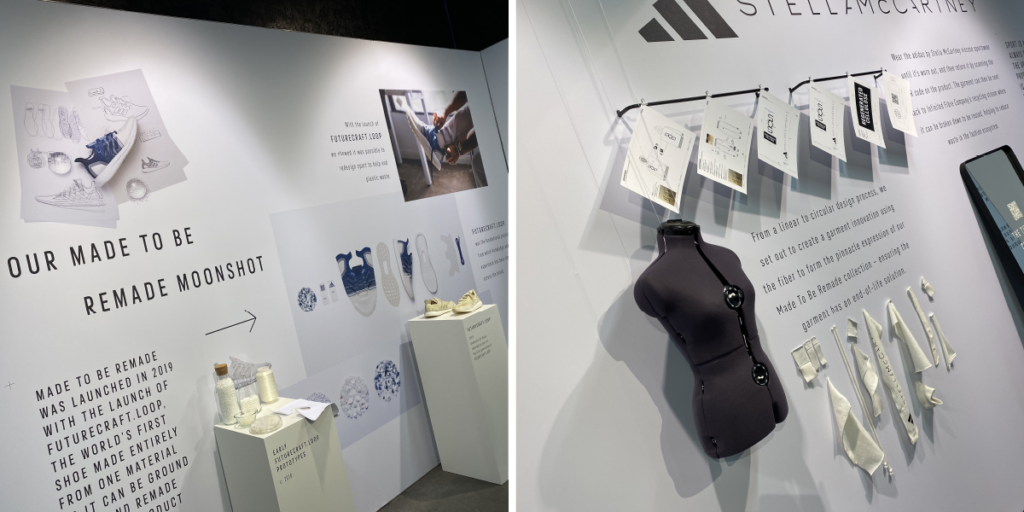
Is there one lasting thought you’d like to leave with people reading this?
Dudley: We are extremely passionate about this topic, to us it isn’t just a business solution to provide a competitive edge: We aim to be sustainable and carbon neutral as an organisation, because we care, and we believe that collectively we have a moral obligation.
Lynda: What is needed is constructive open-mindedness, along with realistic expectations about what larger organisations will accept for an end result, cost, and overall value. In the future, the kit we provide will directly cater to shopper needs. From the endcaps that will dispense bulk products into re-usable containers, to modular display systems that are refurbished and re-used in stores for multiple cycles. Now is the time for us to re-write old rules in the retail business, making sure we are transparent, to make long term effective change.
The team have plenty more to say about sustainability. To hear about what brands Displayplan find inspiring, or for more snippets of this interview, keep your eyes peeled on future newsletters and our social media pages.
Thanks for reading.
[2] IPSOS MORI Feb 2022
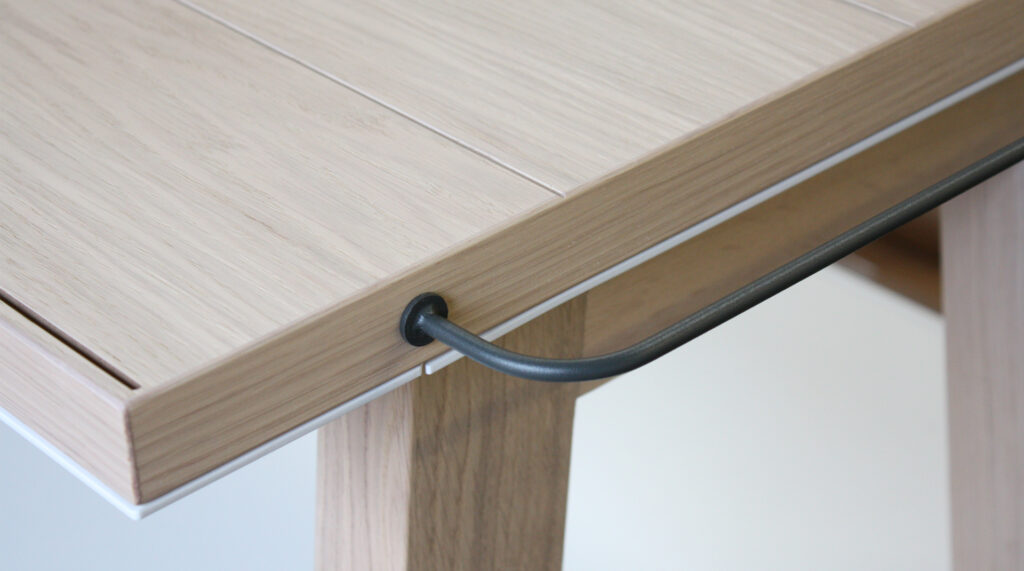
As some retailers and consumer brands continue to face criticism and scepticism over their claims of being sustainable, it’s clear that retailers need to do more.
But what do those two words – “do more” – entail?
Certainly, across virtually every industry sector, there are examples of corporates and multinationals making claims about their green credentials or their sustainable approach.
In the retail sector, there are many studies that show shoppers need to be more convinced about sustainability claims. With heightened levels of environmental awareness through TV documentaries, and shocking reports about multinationals ‘greenwashing’ their environmental record, consumers are increasingly looking for solid proof of action being taken to improve sustainability, not just words and pretty pictures.
With sustainability and climate action featuring increasingly in consumer spending decisions, controlling carbon impact should be a central part of retailers’ approach to business.

What should retailers be doing?
For Displayplan, the definition of “do more” means putting our money where our mouth is when it comes to sustainability.
For example, in 2020 we became a carbon neutral company and have maintained this status.
Through the efforts of our leadership, design, and production teams, we continue to provide our clients with sustainable solutions based on proven, practical and realistic actions that reduce embedded carbon in their retail displays.
Sustainability is highly complex and multifaceted, consisting of many different dimensions which start with the design, which controls the environmental impact of our displays through manufacturing partners and suppliers.

Start by measuring carbon
As a supplier of display solutions, Displayplan’s delivery approach puts a single key question at the heart of its sustainability policy: “How can we measure the environmental impact of our retail store displays?”
The answer lies in the Low Impact Shopfitting Tool (LIST), which provides a framework for designers measuring and reducing embedded carbon in displays.
LIST allows us to measure the sustainability of our design solutions and create a benchmark that can show progressive improvement across a range retail display design metrics including materials, energy, and transportation.
It also demonstrates to our clients that we are committed to helping them meet their sustainability goals, through our design for disassembly principles, use of recyclable materials and elimination of single-use plastics.
LIST was developed by sustainability experts at BRE (Building Research Establishment) with retail industry leaders including Displayplan to “enable retailers, designers and manufacturers to evaluate and compare the environmental impact of interior fit-out designs.”
Download Displayplan’s Guide to LIST here.
TOP TIP: retailers and brands should require display solutions providers to factor measurement of embedded carbon into the design process from concept through to end-of-life re-purposing or disassembly.

Reduce Carbon in Retail Displays
When we know the carbon impact of our retail display solution designs, we can take the necessary steps to reducing it by light weighting materials and refining components.
Operational carbon emissions arising from lighting and screens can be measured and reduced by selecting sustainable, energy-efficient suppliers of renewable energy.
Carbon impact can be measured and reduced through the substitution of materials used in display designs. Targets for carbon reduction in retail displays include:
- Choose natural instead of manufactured construction materials: the use of natural, renewable materials such as timber from sustainable sources instead of process-intensive manufactured materials offers a clear route to embedded carbon reduction.
- Opt for sustainable surface finishes: retail display surface finishes such as PVC or other plastic laminates applied to core wood construction materials stop end-of-life recycling. These different materials should not be bonded together permanently e.g. plastic to wood. Instead, paper-based laminates should be used to enable recycling, avoiding landfill or incineration.
- Use recycled material: using recycled content within materials can reduce the carbon impact of a new display e.g. mild steel with 60% recycled content and paper based packaging with 100% recycled content.
- Make display designs modular: designing modular elements into a retail display means you can efficiently build any size display to suit the store and replace worn out components individually, saving considerable wastage.
- Choose sustainable display substrate: switching graphic substrate materials from Foamex (PVC) to card reduces CO2 significantly because card is easier to recycle.
- Modify display designs to use less material: using less material in retail displays reduces embedded CO2. For example, reducing plywood thickness from 25mm to 18mm saved 16% of embedded carbon and cuts down weight.
- Source sustainably wherever possible: sourcing locally or regionally reduces delivery miles and carbon impact compared to international freight, while flatpack designs that optimise box size and palletisation, reduce shipment volume and improve transportation efficiency.
TOP TIP: retailers and brands should use a sustainably conscious retail design specialist to create low-carbon displays, incorporating “design for disassembly” principles into the whole display lifecycle from the start of the process to end-of-life.

Carbon offsetting what can’t be reduced
Carbon offsetting has – in some quarters – drawn a fair amount of criticism. That’s because many of the companies that talk about it on their websites and in their CSR statements are involved in heavily carbon producing sectors such as oil and gas or air transportation.
However, for the retail sector, and considering the measurement and reduction steps discussed above, carbon offsetting does represent a valid path towards a more sustainable way of business.
What is carbon offsetting?
Where carbon emissions produced via business operations cannot be reduced to zero through reductions alone, carbon offsetting aims to counterbalance the carbon through other positive measures and interventions. Examples include:
- Forestry and conservation
- Renewable energy
- Community projects
- Waste to energy conversion
Not all carbon offsetting schemes deliver in the way intended, and it’s also true that some organisations use carbon offsetting as a veil for the continuation of environmentally damaging and unsustainable business operations.
The key is to find an offsetting programme which will work most efficiently to deal with the carbon footprint of your particular business.
For some organisations with a relatively small carbon footprint, a single activity scheme such as tree planting scheme be sufficient to offset it.
For others, a multi-benefit activity which involves the business in promoting renewable energy or making clean water available may be more appropriate and can feed into a CSR programme.
Developing a Carbon Offsetting strategy
The risk of carbon offsetting is that it can be a ‘lip service’ strategy that looks better than it delivers on real behavioural change; as mentioned above, to be truly beneficial, a carbon offsetting strategy should be used once every avenue of carbon reduction has been followed. Carbon offsetting is not just an extra cost of continuing with environmentally unsound business processes and operations.
Displayplan’s approach is to:
- Offset our operational Tier 1 and Tier 2 GHG emissions through a credible, established carbon credit programme and reduce our future environmental impact.
- Measure the carbon in our retail display designs so that our clients can make their own offsetting decisions either through their own initiatives or our strategy.
TOP TIP: when selecting a carbon offsetting scheme, be rigorous in researching credibility of the provider. Look for validation and verification accreditations from organisations that show adherence to safeguards, stakeholder inclusivity and proof of sustainability impact. Be careful too to ensure that the principles and values of your carbon offsetting partner align with those of your organisation, your clients and your supply partners.
Next steps
If you choose to work with Displayplan, you are assured that through our work with our carbon credit partner, we can support and enable your company’s journey toward carbon net zero.
Through our carbon measurement and reduction methodologies and our identified market-leading partner, we can offset the carbon in your retail display solutions or provide a measure of the carbon in your retail display design solutions for you to make your own offsetting decisions.

2022 is here! So to kick off the New Year here’s a roundup of some key highlights from 2021.
Though 2021 was a challenging year for many in retail, Displayplan continued to deliver visionary brand experiences designed to attract and engage shoppers.
In 2021 community, sustainability and usability have all been significant and integral in our collaborations with retailers and brands. Let’s look back at some of the key stories that have mattered most through the year in the form of our commitments to sustainability, customers and employee milestones.
Planet
2021 was the year that sustainability and environmental change came into sharper focus than ever, with the question being asked of all businesses: “What are you really doing to respond to the climate crisis?”
At Displayplan we have continued to be both critical and creative when it comes to confronting the environmental impact of our work.
During 2021, driving sustainability with our customers has been a massive priority for us, with an ongoing focus on being a carbon neutral company since 2020.
In March, we introduced our mission to reduce the embedded carbon in our displays with our Measure. Reduce. Offset. campaign, and we continue to offset our Tier 1 and 2 greenhouse gas emissions.
We achieve this by measuring and reducing as much of the embedded carbon as possible across the whole life cycle of all of our displays, using Design for Disassembly principles and our Sustainable Design Thinking approach. We then offset the carbon that cannot be eliminated through measurement and reduction.
Displayplan’s commitment to sustainability will continue into 2022 and beyond as part of our contribution to the retail sector’s target of achieving net zero carbon by 2040.

Projects
Experiential display has been a major focus for us in 2021 and will continue to be in 2022.
Displayplan collaborated with Boots to create immersive, technology-driven play tables that invite customers to touch, feel and experience high-value electrical beauty products. This project was about placing shopper experience at the heart of the display, using our expertise and learning to create an effective customer journey based around sensory exploration, entertainment and education.
With these Boots play tables, the customer journey starts with eye-catching illuminated category headers and full-length screens displaying video content. The shopper is then presented with a range of ‘lift and learn’ options, whereby lifting the product triggers informational screen content to display product features.
To conclude the experience, shoppers can either purchase the product in store or use a QR code or tablet to connect directly with Boots.com and place an online order if, for example, the desired product is out of stock.
When it comes to offering shoppers an experience comprising product exploration and physical try out, in-store displays still have the undisputed and unassailable advantage over online shopping. The interactive design of the play tables concept came from a requirement to give shoppers a reason to visit their local Boots store rather than buy online.
We’re pleased to say that our efforts paid off as the Boots play tables project was declared “POPAI Innovation Gold Award Winner” of 2021.
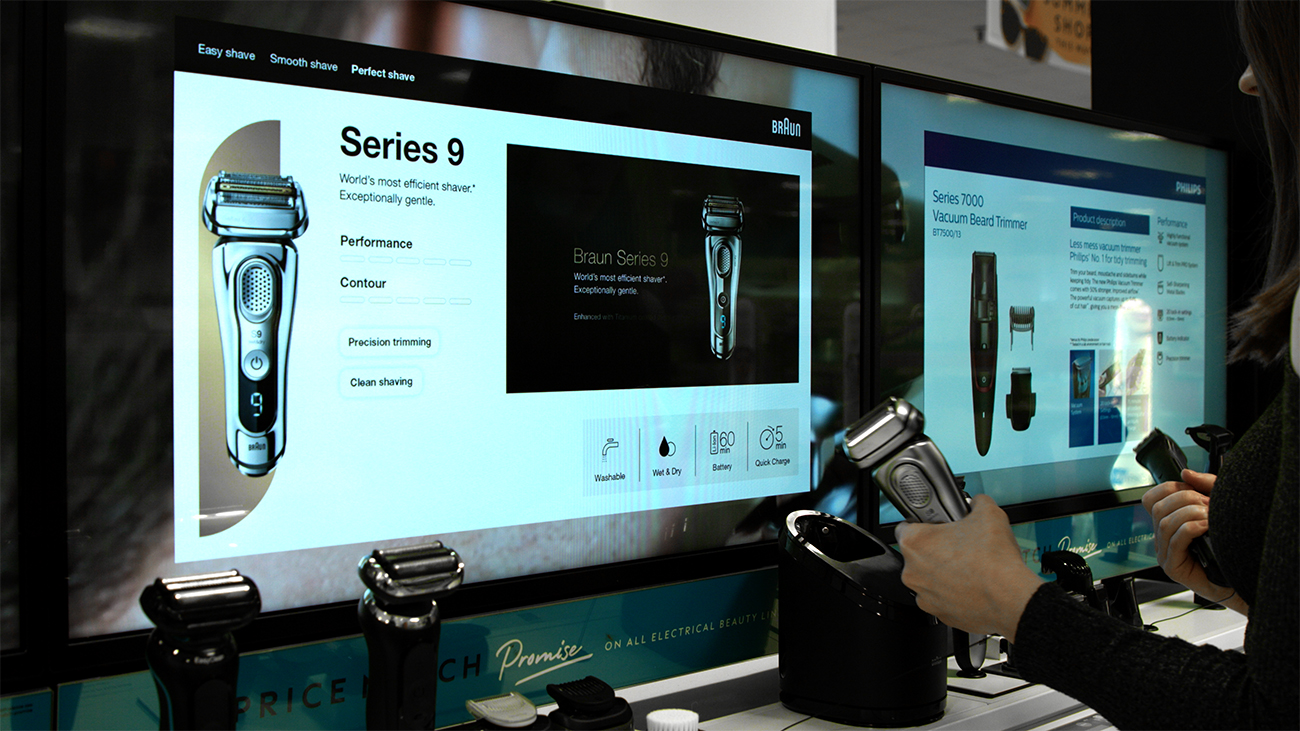
Additionally, Displayplan was awarded the POPAI Sports and Fashion Gold Award for our work with Garmin to create a display for their premium collection of watches.
Garmin wanted a flexible and modular display system with integrated technology and strong security features. The solution was informed by Displayplan’s extensive experience of creating displays that combine functionality with inspirational creative and technical touches. Our display included a new, flexible security system, elegant digital signage providing product information and ‘lift and learn’ technology. Garmin have reported that as a result of our display innovations, theft of devices has decreased while shopper engagement and sales are on the rise.
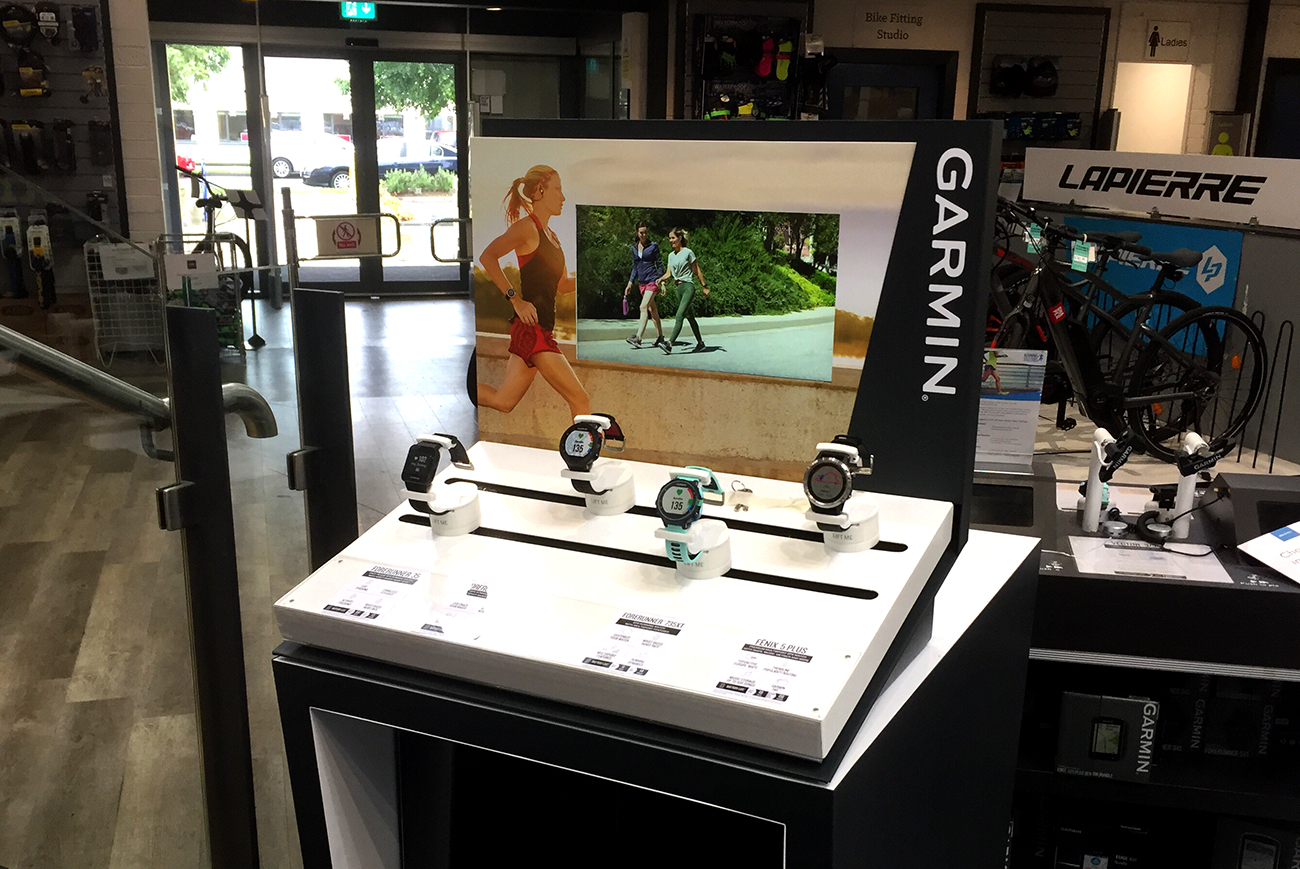
Our recent collaboration with Hotel Chocolat was designed to bring their festive chocolate range to life. We installed two-sided digital signage display showing a series of enticing animations of Hotel Chocolat products. One side of the signage faced outward, drawing the attention of passing customers with taste-appealing graphics and the other faced inward, to enhance the shopping experience with product information for shoppers browsing in the store. The products presented in the digital content were displayed physically below the screen, creating a connection between the imaginative and the attainable. This eclectic range of display solutions surrounds the customer in store, creating an immersively engaging audio-visual experience.
People
We’re thrilled to be celebrating Will Hepworth’s 20-year anniversary as our Creative Design Manager. Will is an experienced concept designer with a strong technical foundation, having majored in Industrial Design and Technology at Loughborough University. Will’s role at Displayplan has him focusing on brand and retail environments and displays. Will can turn his hand to any task, from creating impulse displays for brands such as Wrigley and delivering complex solutions for consumer electronics brands.
Our congratulations also go to Leon Turney on his 10-year anniversary as Digital and Development Director. Leon’s vision for experiential retail has been chiefly driven by blending digital technology with material displays. With this innovative fusing of media, Leon has been instrumental in creating engaging and creative displays for most of the brands we currently work with.
What next for 2022?
With a new year come new projects, new opportunities to learn and create, new exciting collaborations and new challenges to get stuck into. Whether you’re looking to collaborate on a retail display that brings brand awareness and drives sales or you simply wish to find out more about what we do, speak with one of our specialists on 01462 88 6000 or email info@displayplan.com.

Sustainability in consumer retail is often focused around factors such as packaging and provenance – quite rightly as consumer sentiment around these tangible aspects of retail is changing rapidly.
As (at the time of writing) the UN’s latest Climate Change Conference of the Parties (COP26) in Glasgow draws to close, environmental change is very much front and centre.
The role that retailers have in sourcing and offering sustainable, environmentally friendly products to increasingly sustainability-aware consumers is clear.
But there’s more that can be done.
At Displayplan, we champion sustainable retail display and experiences through our sustainable design thinking approach, our focus on design for disassembly and recycling and our use of the Low Impact Shopfitting Tool (LIST) in our designs.
Sustainability in retail
Changing consumer awareness in favour of sustainability is driving changes in retail across the world. Among the young (in particular), sustainability considerations are increasingly coming into play with purchasing decisions.
For example, a survey found that 85% of UK shoppers feel they have been making more sustainable choices within the last year.
Similar trends can be identified across the USA and in Europe. Even more significantly, other recent studies show that consumers would boycott businesses that they perceive as not aligning with their expectations on sustainability.
Most companies have taken notice of these figures, and understandably, this has spurred them into action.
Health giant Johnson & Johnson recently pledged to source 35% of its energy needs from renewable sources, while Coca-Cola’s 2020 sustainability goals stated their intention to recover at least 75% of the bottles they introduce onto the market.
As outlined above, a common focal point for retailers is to offer eco-friendly products or sustainable alternatives alongside established products.
However, an equally relevant way to improve the operational retail carbon footprint is to follow a sustainable thinking approach to the design of in-store product or brand displays.
Displayplan’s sustainable design thinking approach is based around finding ways to measure, reduce and offset carbon in retail solutions. It covers every aspect of retail display from concept design, through to technical development and deployment.

Include sustainability from the start
Carbon reduction must be built into the process from the beginning. It simply cannot be factored into a retail display design once it’s in place.
Starting with the choice of materials, to how the display is designed, functionality, manufacture, use of flatpack packaging and its eventual end-of-life, sustainability should figure from the first sketch concept, considering the complete display lifecycle and circular economy principles.
Design for Disassembly
A key element of the sustainable design thinking approach is the consideration of how the display will be reused and recycled at the end of its life.
For example, different materials should not be permanently bonded together. Plastic laminates used as facias or counter surfaces bonded to timber-based materials are impossible to recycle because of the difficulties of separating the materials. Design for Disassembly enables all materials to be easily taken apart for recycling.
Material selection
Using materials from sustainable sources and that can be easily recycled is incredibly important in sustainable display design.
Striking the right balance between brand look and feel, in-store display performance and durability requires a range of skills and expertise that must start with the specification at the design stage.
This enables supply chain managers and all people downline in the process to deliver sustainable solutions.
Eco-friendly material choice comes into play with manufacturing feasibility such as paint finishes, selection of inks used for printing, formaldehyde-free adhesives used in manufacture of materials such as MDF or chipboard, and – as mentioned above – the ease of separation of materials.
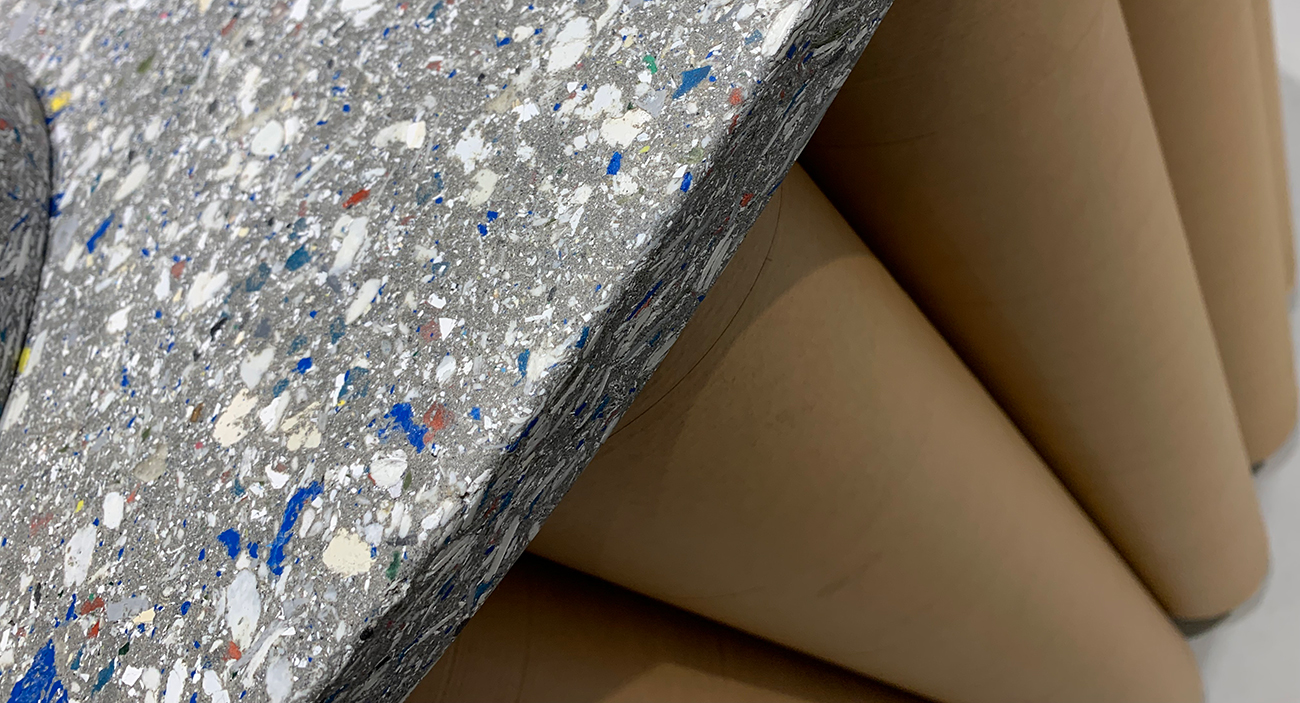
Shipment and transportation considerations
With shipment, consideration must be given to making all designs flatpack, minimising the size of the packaging and driving efficiency for loading containers.
Maximising the number of displays per pallet and container can have a significant positive impact on transportation costs and emissions, thus reducing the overall carbon footprint of a retail display solution.
Packaging for transportation
Display packaging is directly under the control of retail display designers, and is an important consideration in the safe transportation to site and recycling after use.
We specify packing materials that are easy to recycle and protect the display. We aim to eliminate single use plastics in our packaging. This ensures that no plastic enters our seas or landfill.
Eco-friendly packaging features strongly in consumer minds and retailers must adapt their behaviours not just to fulfil sustainability promises but also to retain customers.
According to Coleman Parkes Research, 88% of consumers think that packaging should provide more information about sustainability and 92% would choose paper-based over plastic-based packaging.
For these reasons, when designing retail displays, the importance of sustainable packaging for transportation should always be factored into the overall carbon footprint – and minimised.
Conclusion
Here at Displayplan we take sustainability very seriously, which is why we’ve pledged to be a net-zero carbon company from 2020 onwards.
To achieve our sustainability targets, we always:
- Measure current levels of carbon in our retail display design solutions
- Reduce carbon emissions wherever possible
- Offset the emissions we cannot reduce
We’re experts in this field and can help you create showstopping in-store displays for your retail premises, brands and products, whilst also helping to minimise their impact on the planet.
To find out more, contact our team of retail display specialists today.

The Displayplan creative team toured London’s West End looking for the latest innovations in retail display.
We are always aware of what is happening in market, researching what we all live, love and breathe. It’s great to see latest retail trends and understand how shopper behaviours are evolving.
We love to soak up what some of the world’s leading global brands and masters of retail display are doing in-store to respond to these trends, in one of the great retail capitals of the world.
Our Store Tours are both informative and instructive, providing ideas and inspiration on what can be brought into our own thinking – as well as other ideas that might be best avoided.
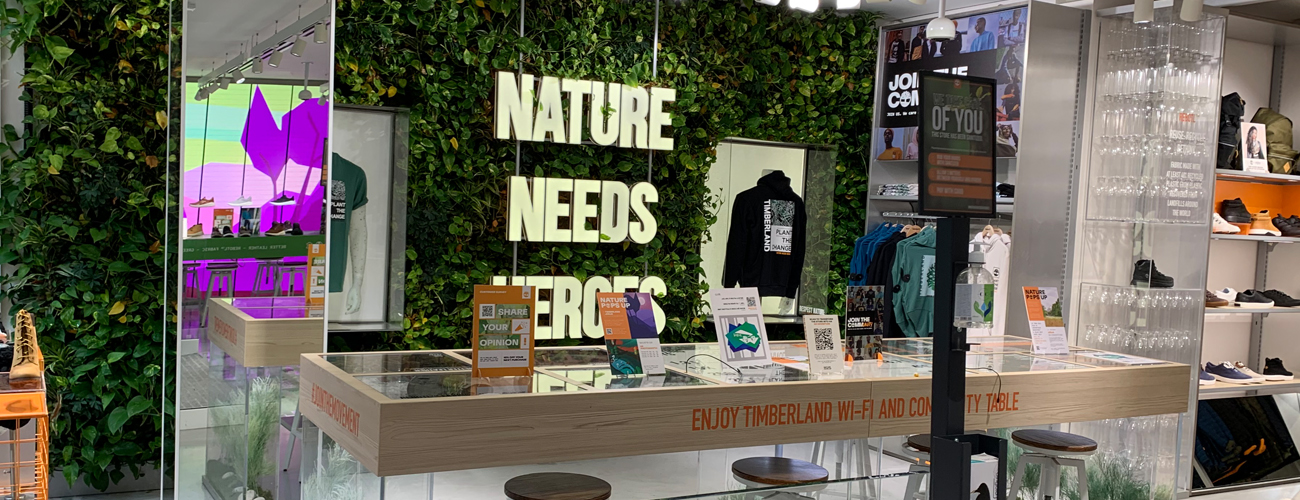
Download the report now
The report from Dudley and the team, “Store Tour London – Autumn 21” can be downloaded here.
What are we aiming to learn?
The aim of our Store Tour is to explore some of the latest trends in London retail display across three key sectors in which we have extensive experience: fashion, consumer electronics and sports.
We found for examples of:
- Changing shopper behaviours
- New sustainable approaches being introduced into physical retail
- How integrated technologies are being applied to deliver engaging experiences.
What did the Store Tour tell us?
There is strong evidence that sustainable thinking is being widely used to bring about a reduction in the use of single use plastics, both through reusable packaging and recycled materials.
We found that in retail, as across most sectors, consumer behaviour has changed significantly in the last 18 months due to the COVID pandemic. As a result, brands are increasingly adapting by making highly innovative use of integrated technologies both to attract shoppers into store and retain their attention whilst there.
It is clear that health and wellbeing are incredibly important to shoppers, and retailers are going to occasionally extraordinary lengths to recognise and cater for this.

Which brands did we visit on our Store Tour?
In total we visited 15 West End stores along the length of Oxford Street and its immediate neighbouring streets of Regent Street and Carnaby Street as well as some new and exciting retail stores outside the immediate environs of these focal shopping areas.
Stores we visited included:
- Rapha
- Lululemon
- Breitling Watches
- Apple
- Microsoft
- Sports Direct
- Selfridges
- Sook
- Samsung
- Sports Direct
- Dyson…
…and a range of others.
Next steps
Read our insights and observations from our Store Tour by downloading our short Store Tour report.
Find out how Sook are challenging the very essence of retail presence with a new pop-up retail concept whereby premium high street retail space can be rented for any period – from a single hour to a day or a week.
Learn how Selfridges are using the attraction of an in-store cinema combined with costumes from the movie screenings to draw shoppers in.
And read our comparison of the flagship stores of two giants of consumer electronics Apple and Microsoft as they battle for shopper attention and in-store dwell time.
There’s lots more food for thought and inspiration as we draw our own conclusions from this Store Tour. We hope you enjoy it!
About Displayplan
Displayplan are retail display experts who can help you create showstopping in-store experiences for your retail premises, brands and products, whilst also helping to minimise their impact on the planet.
To find out more, contact our team of retail display specialists today.
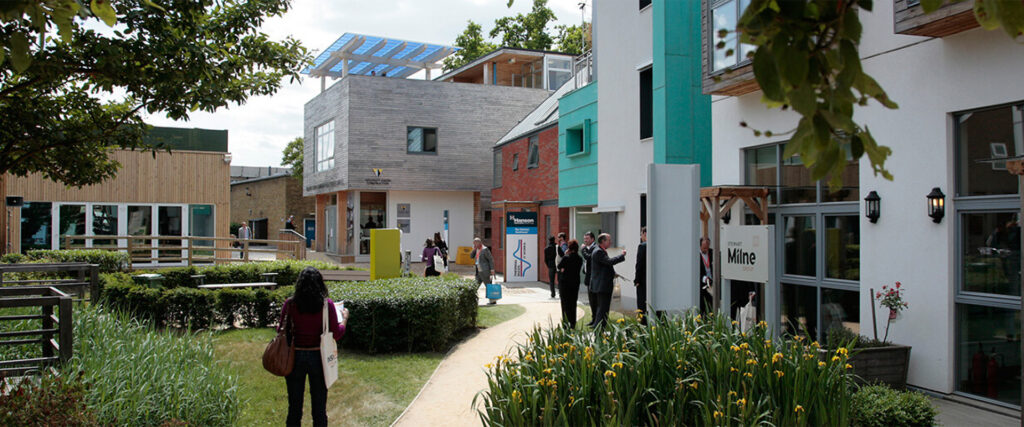
How do you measure the environmental impact of your retail store displays, and how can you reduce the environmental impact if you can’t measure it?
At Displayplan we use the Low Impact Shopfitting Tool (LIST) to measure and reduce the embedded carbon in our display designs. The foundation comes from BRE/BREEAM’s deep database of materials and Life Cycle Assessments (LCA) providing world-class data used in the LIST assessment tool.
Download this guide to learn more about LIST
LIST – PDF Download

Our last three articles have discussed the forces – commercial and ethical – pushing retailers toward measuring and reducing their carbon footprint.
The measuring aspect of the process involves working with tools such as the LIST (Low Impact Shopfitting Tool) to ascertain the embedded carbon present in retail display designs. This figure can then be added to the operational carbon footprint generated by retail operations, giving an overall figure.
Knowing the carbon footprint of a retail space is the first step toward achieving net carbon neutrality. Understanding that not all this carbon can be eliminated through the adaptation of operational and overhead activities is the next step.
The retail sector as a whole, through the British Retail Consortium, has set an ambitious target of achieving net zero carbon by 2040, and for this to be achieved, carbon offsetting is going to have to play a key role.
In this article, we define what carbon offsetting is, outline the carbon offsetting measures that Displayplan is taking in its retail display design and manufacturing operations and offer a framework for retail brands a way to offset the embedded carbon in their retail display designs by Displayplan.
What is carbon offsetting?
The role of carbon offsetting is to balance the carbon produced (for example during the operation or manufacturing of retail activities and display solutions) which is otherwise impossible to reduce to zero.
In simple terms, no matter how much work is done to use clean and sustainable energy sources, materials and methodologies in retail display design processes, reducing carbon generation to zero largely remains a practical impossibility.
Carbon offsetting involves making a net contribution to carbon capture and storage through interventions such as:
- Forestry and conservation – planting new forests to capture carbon or preserving existing forests to ensure that existing carbon is not released into the atmosphere.
- Renewable energy – investing in solar, wind and hydro power sites around the world.
- Community projects – investment in community projects such as introducing energy-efficient methods and technologies to developing communities in a manner which aids those communities and reduces the carbon they create.
- Waste to energy conversion – this involves investing in projects which capture the methane produced by waste and using it to generate electricity.
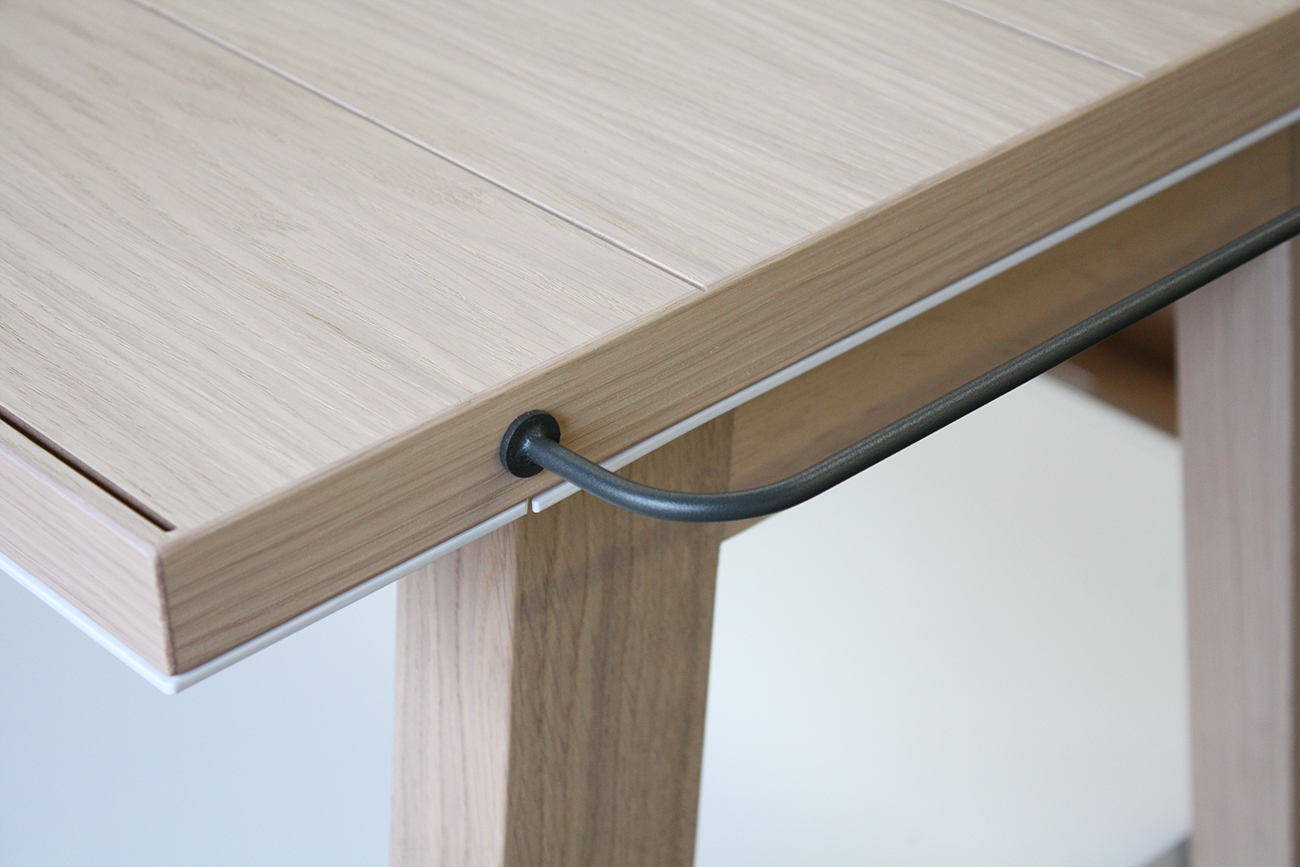
Why is carbon offsetting necessary?
Carbon offsetting is necessary because achieving net zero emission through mitigation and reduction alone via ‘normal’ means and processes is close-to-impossible.
Instead, carbon offsetting recognises the reality that greenhouse gases produced in one part of the world can effectively be counterbalanced by offset activity carried out in another part of the world.
How does carbon offsetting work?
Having made the decision to use carbon offsetting to move further toward net zero emissions, the question becomes how to approach it. In simple terms, there are two options:
- A single subscription activity such as joining a scheme which plants a number of trees per year based on the number of employees in your business.
- A multi-benefit activity such as those detailed above which, at the same time as offsetting carbon emissions, encourages positive outcomes such as clean water supply, renewable energy, health outcomes and gender equality.
The key is to find an offsetting programme which will work most efficiently to deal with the carbon footprint of your particular business.
If a business footprint, as measured in terms of operational, overhead and embedded carbon is relatively small then a simpler scheme based on tree planting may be sufficient to offset the carbon being produced.
Opting for a multi-benefit activity not only boosts the amount of carbon that can be offset, but also involves your business in activities such as promoting renewable energy and making clean water available to under-developed areas.
In turn, this can play a major role in the increasingly important task of building an organisation’s Corporate Social Responsibility (CSR) profile.
Corporate Social Responsibility as a commercial choice
There was some speculation that the economic impact of the COVID-19 pandemic might lead to a drop in consumer concern around ethical issues.
Research has indicated that this is not in fact the case. A survey by Accenture found that 60% of consumers reported “making more environmentally friendly, sustainable, or ethical purchases” since the start of the pandemic, while research group Ipsos Mori reported that 65% of people around the globe believe “prioritising climate change is important in the economic recovery after coronavirus“.
Against this backdrop, combining carbon offsetting with delivering other ethical benefits will play a key role in attracting the consumers of the 21st century.

Displayplan’s carbon offsetting approach
The range of programmes designed to help organisations offset their carbon emissions and footprint is wide and growing.
Displayplan’s strategy is to:
- Offset our own operational Tier 1 and Tier 2 GHG emissions by aligning with an established and credible carbon offsetting programme.
- Measure the embedded carbon in our retail display design solutions to enable our clients to make their own offsetting decisions, either through their own company initiatives or by working with our strategy.
To pursue this strategy, we work with Gold Standard, a global leader in the effort to achieve the Sustainable Development Goals set by the United Nations in 2012.
Why Displayplan selected Gold Standard
Following extensive research, Displayplan chose to work with Gold Standard for four main reasons:
Credibility – in our opinion, Gold Standard is a highly credible and trustworthy sustainability offsetting organisation specialist with a proven track record. It is easy for participating companies to feel reassured that the outcomes they seek are being achieved.
Rigour – each project offered as an option by Gold Standard has been subject to an extremely rigorous certification process involving the following:
- Project planning – developers must plan their project against Gold Standard safeguards. Each plan must include an estimate of the climate and sustainable impacts it will deliver.
- Preliminary review – the first drafts of the plan will be reviewed, and must include an assessment of safeguarding principles, an estimate of the impact of the development and a plan for monitoring those impacts.
- Preliminary approval – at this stage, the project can be given the green light to move forward, subject to an independent assessment carried out by an accredited validation and verification body (VVB).
- Project design review – once a project has been approved by a VVB, it is reviewed by SustainCERT. To achieve ‘Gold Standard Design Certified’ status, the project must demonstrate estimated impacts, a robust monitoring plan and stakeholder inclusive design.
- Project monitoring – the project must be monitored in line with the certified development plan.
- Third party validation – validation by an accredited VVB, as during the development phase, involves reviews of documentation and a visit to the actual development.
- Performance review – SustainCERT will review the performance of the project, confirming that it has been verified by the VVB. Official certification by Gold Standard requires confirmation of:
- The project’s adherence to safeguards
- Stakeholder inclusivity
- Proof that sustainable development impact has been achieved.
Single payment – by making a one-off payment it is possible for Displayplan to offset the operational impact of client retail display projects through the global projects which have been certified as Gold Standard status.
Alignment with our clients – many of our clients are already working with Gold Standard to offset their carbon emissions, including the emissions embedded within retail displays.
What this means for our clients
For Displayplan clients, our work with Gold Standard acts as an enabling factor in the journey toward carbon net zero. It means that the embedded carbon of a retail display project can be offset in one simple move.
The market-leading status of Gold Standard provides reassurance that Displayplan’s carbon offsetting is rigorously implemented, adding credibility to our own carbon neutral status.
It further gives our clients a route forward towards net zero carbon, because we can offset embedded carbon in their retail display solutions on their behalf if this is what they require.
Alternatively, we will provide a measure of the embedded carbon in our retail display design solutions so that our clients can take their own offsetting decisions, using Gold Standard should they wish to do so.
________________________
Displayplan is a leading provider of retail display solutions that deliver great brand experiences, grow retail engagement and increase sales. We are committed to a sustainable approach in everything we do. We won the POPAI 2016 sustainability award through the application of our lifecycle thinking in evolving and reducing embedded CO2 and design for disassembly principles in our displays.
With 35 years in the display business, we combine retail display design excellence with physical and digital in-store media for the world’s most prominent brands and retailers.
Call us to discuss your retail display requirements and request a call with one of our consultants.